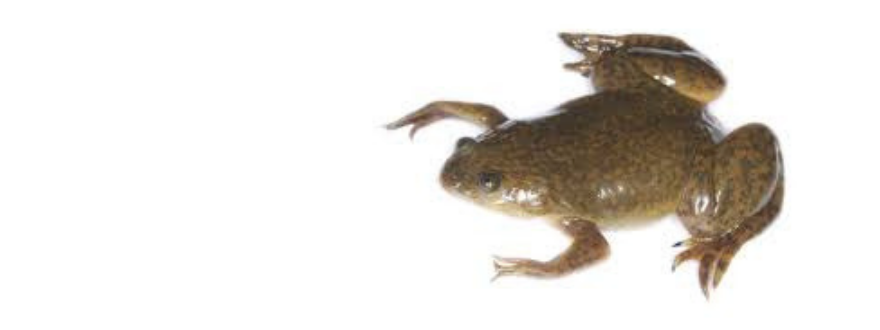When most Americans think about emerging infectious pathogens, human diseases like AIDS, MRSA and Ebola spring to mind first.
Taegan McMahon, however, is focused on the emerging pathogens – primarily fungus – that are causing significant declines in wildlife from bats and bees to corals, snakes and amphibians. “Hundreds of threatened species of frogs have been removed from the wild as a last-ditch effort to protect the species from extinction,” said the assistant professor of biology at the University of Tampa.

Working with a team of students and professors from UT, Emory, Notre Dame and Colorado University, McMahon’s team has proven that exposing frogs to dead fungus works as a vaccine to protect them from future infections, potentially solving a global problem that is devastating populations in some areas.
The fungus — formally known as Batrachochytrium dendrobatidis — has caused the extinction or local extinction of over 350 species of amphibians including spring peepers and wood frogs that are familiar to people who have moved to Tampa from more northern locations. “In some cases, they just aren’t there anymore. Worldwide, it is second only to humans in the numbers of extinctions it has caused.”
There’s no chance it can infect humans, but it could reduce the biodiversity enough that our environment and forests are not healthy anymore, she said. “That would absolutely have an impact on humans.”

The researchers — including a number of UT undergraduates — are hoping to build a model that will allow natural populations of amphibians to reestablish in the wild. “We may be able to help populations that are struggling increase in size and we can help populations that have been wiped out become strong again.”
Amphibians are one of the most important groups in the environment because they consume mosquito larvae (vectors of human disease), they are food for wading birds like egrets and night herons, as well as small mammals like foxes and otters, she adds “We cannot have a strong stable environment without amphibians, and this work gives us a really do-able way of helping their populations come back.”
Batrachochytrium dendrobatidis is a cold-loving fungus and has not been verified in Florida — “yet,” she emphasizes. It is suspected to be present here, probably following the accidental release of an infected frog called the African clawed frog.
“The hope is that we can transfer this knowledge from one species and one type of fungus to the other animals that are threatened by emerging pathogenic fungi,” she said.
Like many emerging pathogens, including AIDS, which evolved from monkeys, and Ebola, first seen in fruit bats, the fungus has host species that can tolerate the infection and host species that cannot. When an infected animal is released into the wild, the fungus spreads to other species which have not developed a tolerance.
The study, the first published work to look at protecting frogs from B. dendrobatidis with a vaccine, exposed the frogs to a killed fungus vaccine repeatedly (up to four times) and then exposed them to live fungus to see if they gained an infection following the vaccine.

Frogs were treated with heat to kill the fungus. After treatment, they both avoided the fungus when possible and developed a resistance to the disease which impacts its immune system.
McMahon and her team already have won two additional grants – one from the National Science Foundation and a second from the National Institutes of Health – to continue and expand their research on this devastating disease agent.
“It’s incredibly exciting,” she said. “Usually it takes years of back-and-forth on grant applications for the NSF and NIH – they approved these grants in the first round!”
Fascinated? Here’s a video to learn more about Bd and the impacts to amphibians.
Bd: Amphibian plague from Understanding Animal Research on Vimeo.
[su_divider]
